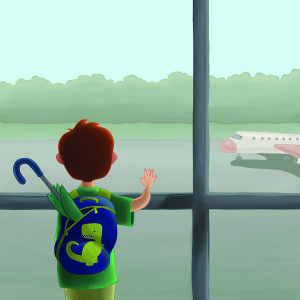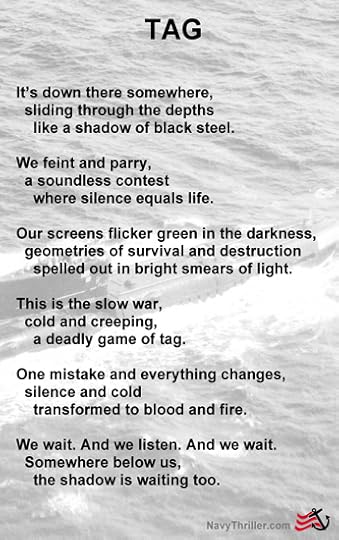Jeff Edwards's Blog, page 2
February 1, 2015
Hanging Out With Heroes
 A few days ago, I had the pleasure of attending a Surface Warrior Join-Up, hosted by the San Diego chapter of the Surface Navy Association, in partnership with the guided missile cruiser USS Cowpens. In the spirit of full-disclosure, I have to admit that I wasn’t particularly looking forward to the event. I held membership in the SNA for a couple of years in the late 90s, and it struck me as a rather stolid organization. I agreed with the mission and recognized the good intentions, but the entire thing seemed to lack the sort of energy that made me want to get involved.
A few days ago, I had the pleasure of attending a Surface Warrior Join-Up, hosted by the San Diego chapter of the Surface Navy Association, in partnership with the guided missile cruiser USS Cowpens. In the spirit of full-disclosure, I have to admit that I wasn’t particularly looking forward to the event. I held membership in the SNA for a couple of years in the late 90s, and it struck me as a rather stolid organization. I agreed with the mission and recognized the good intentions, but the entire thing seemed to lack the sort of energy that made me want to get involved.
I rejoined the Surface Navy Association a little over a year ago, in the hopes that things might have changed in the years since my previous experience. I signed up, paid my annual dues, and then proceeded to ignore my new affiliation the way that most people ignore gym memberships. (Big plans, but no actual follow-through.) Probably, I had subconscious assumptions that I’d be letting myself in for the kind of disappointment I’d felt the first time around.
So I nearly ignored the invitation to the Surface Warrior Join-Up when it appeared in my email. But then I thought, what the hell? They’re holding the event at a very cool pizza restaurant/nightspot, and there will be free appetizers. How bad could it possibly be?
That turned out to be the wrong question. I should have been asking, ‘How good could it possibly be?’ Because it was amazing.
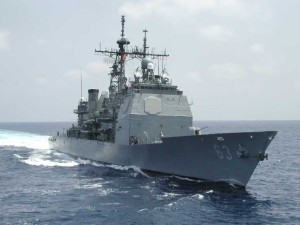 I walked in the door expecting a sedate group of old-timers (like your faithful blogger here), swapping sea stories about the good old days, and grumbling about the directions being taken by the “new” Navy. Instead, I found myself in a crossfire of enthusiasm and information exchange. The energy in that place was palpable. The pool table went untouched the entire time I was there, and I rarely saw anyone standing at the bar. The men and women in that room were too busy mixing around and connecting with their fellow Surface Warriors. They weren’t swapping predictions about the Super Bowl, or grousing about their chains of command. They were trading ideas, lessons learned, and plans for improving their divisions, departments, and ships.
I walked in the door expecting a sedate group of old-timers (like your faithful blogger here), swapping sea stories about the good old days, and grumbling about the directions being taken by the “new” Navy. Instead, I found myself in a crossfire of enthusiasm and information exchange. The energy in that place was palpable. The pool table went untouched the entire time I was there, and I rarely saw anyone standing at the bar. The men and women in that room were too busy mixing around and connecting with their fellow Surface Warriors. They weren’t swapping predictions about the Super Bowl, or grousing about their chains of command. They were trading ideas, lessons learned, and plans for improving their divisions, departments, and ships.
In the space of my first half hour I got in on a great conversation with some officers from LSC Squadron One about the conversion of future Littoral Combat Ships to Frigates, with some fascinating thoughts about what needs to happen in terms of design changes and mission planning. Ten minutes later, I got drawn into an exchange about how Merchant Marine ships fit into Surface Warfare strategy—what the Navy’s doing now; what the Navy used to do in World War II; and what the Navy should do in the future.
If that doesn’t sound exciting, you’ve never been around Surface Warriors when they get fired up. I heard the gamut, from funny, to thought-provoking, to head-shaking, to appalling, to positively brilliant. And all of it was geared toward making the Surface Navy into a more capable and resilient force.
The whole night was like that. I’ve been to full-blown parties that weren’t nearly as much fun, but despite the air of enjoyment, it wasn’t just an entertaining evening. It was vision, and improvement, and change. In other words, it was everything I’d been hoping for way back in the 90s.
It was a gathering of heroes… The Surface Warriors of the United States Navy. And I was honored to be in their presence.
January 16, 2015
Duck-Nappers At Large
A few days ago, a reader dug up an old entry from my Sea Story archives, and wrote a nice comment about some hijinks from his own Navy days. In the process of replying to his comment, I looked over my old story and found myself chuckling a couple of times.
Not hysterically funny, but smile-worthy. That’s all the excuse I needed to polish up the story and share it here.
Duck-Nappers At Large…
About halfway through a Westpac deployment, AJ, one of the guys in my division, received a care package from home. In addition to the usual assortment of snacks, family snapshots, and miss-you notes, it contained a stuffed duck. (The cute and cuddly toy animal kind, not the taxidermy kind.) The Sonar Gang aboard USS Towers was known for having a twisted sense of humor, so AJ wisely decided to hide his fluffy buddy from the rest of us, to protect it from horrible pranks. Despite his best efforts, it was only a matter of time until the little quacker was duck-napped.
I won’t say that I was in on the snatch, but I will admit to being a co-conspirator. Once we had possession of the duck, we decided to hold it for ransom. AJ had a stash of Australian candy bars in his locker, and we hoped to ransom the duck for some Polly Waffles. Foolproof, right? That’s what we thought.
Our brilliant plan quickly ran into a snag. Word of the duck-napping had gotten around, and AJ began receiving anonymous notes from several sources—all claiming to have custody of the missing duck.
We realized that, tf we were going to cash in, we would need proof that we were the real duck-nappers. We figured we’d take a photo of the duck and attach it to a ransom note made from letters cut out of magazines; just like in the movies. Unfortunately, digital cameras hadn’t been invented yet, and we couldn’t find anyone aboard with a Polaroid. After several hours of fruitless searching, I got a brilliant idea… If we couldn’t photograph the duck, we could Xerox it.
 As the originator of this brainstorm, I was elected to do the dirty deed. A buddy let me into the Administration Office after hours. Safely inside with the door closed, I shoved the duck under the lid of the copier and began trying to get a good copy of it. The bulk of the stuffed toy made it impossible to get the lid lowered properly, so too much light kept getting in and washing out the image. We flipped off the light switch and were happily Xeroxing the duck in the dark, when the door opened and the lights came on.
As the originator of this brainstorm, I was elected to do the dirty deed. A buddy let me into the Administration Office after hours. Safely inside with the door closed, I shoved the duck under the lid of the copier and began trying to get a good copy of it. The bulk of the stuffed toy made it impossible to get the lid lowered properly, so too much light kept getting in and washing out the image. We flipped off the light switch and were happily Xeroxing the duck in the dark, when the door opened and the lights came on.
It was the Executive Officer, dropping by to pick up some paperwork. He looked at me. Then he looked at the duck squashed into the copier. Then he looked at the stack of duck images in the out-tray of the machine.
He stood there for about ten seconds, then he gave a heavy sigh and turned the light switch back off. Standing there in the dark, my face illuminated only by the shuttling green glow of the copier light, I didn’t know whether to laugh it off or try to explain. I expected the XO to leave, but he just stood there, silhouetted in the doorway.
Finally, he shook his head and spoke softly. “I’ve got a leak in One-Alpha Oil Purifier. I’ve got two idiots who missed ship’s movement. I’ve got a stack of overdue reports on my desk, and a Second Class Electrician’s Mate who likes to dress in women’s clothing every time we pull into a foreign port. Now, I’ve got perverts Xeroxing farm animals in the dark. Why did I ever agree to take this job?”
He closed the door and walked away.
December 20, 2014
The Bumbershoot Conspiracy
Jeff Edwards is back, with twice the action! Twice the excitement! Twice the suspense! And more cute little umbrellas than ever before…
(Please disregard everything in the previous paragraph, except for the part about cute little umbrellas.)
It’s true that my latest book is hitting the shelves just in time for Christmas, but it’s not exactly your typical Jeff Edwards adventure novel. The Lonely Little Bumbershoot is a children’s story, co-written with my wife Brenda, and beautifully illustrated by the amazingly talented Brise Birdsong.
If you’re looking for cutting-edge naval combat action or a dystopian future detective thriller, this ain’t it. But if you’re interested in a heartwarming family-friendly tale about love, loss, and the journey toward a new life—this just might be the book for you.
We hope The Lonely Little Bumbershoot will bring a tear to your eye, and a smile to your lips. (It still gets us every time, and we’ve lost count of how often we’ve read it.)
Wishing you all the blessings of a joyous Christmas, and a happy and prosperous New Year.
— Jeff
November 9, 2014
Flying with Heroes
On a recent business flight to the east coast, I happened to end up sitting next to a young woman on her way to Army basic training. When she discovered that I was an old retired Navy goat, she spent most of the flight picking my brain about what to expect in boot camp (and afterwards). I admitted that my own days as a boot were more than thirty years behind me, and that Army basic training and Navy basic training probably aren’t much alike. But I did my best to give her my honest impressions about military life—the bad as well as the good.
When the meal cart rolled by, she whipped out a voucher check issued by her Army recruiting station, and tried to buy a boxed lunch. The flight attendant, a man of about my own age, politely pointed out that Delta Airlines only accepts credit cards or debit cards. Her voucher check was no good on the plane.
The young recruit tucked away her meal voucher and resigned herself to finishing a coast-to-coast flight with only airline peanuts to eat. I wasn’t about to let a soon-to-be soldier go hungry, so I reached for my credit card and told her to order whatever she wanted. When I tried to hand my card to the flight attendant, he shook his head. “Nope,” he said. “This one’s on me.”
He handed the recruit a boxed lunch and a couple of snacks, and then trundled his cart down the aisle before I could catch his name. I looked for that flight attendant when the plane landed in Atlanta, so I could thank him for his kindness, but he was nowhere to be seen.
If anyone from Delta Customer Relations happens to read this, it was Delta Flight 1692, on October 21st. The male attendant on that flight showed generosity and support for our troops in a very simple, but utterly unmistakable way. He didn’t ask for recognition, and he didn’t even stick around long enough for me to thank him. Whatever his name, I’d like to shake his hand if I ever see him again.
As far as I’m concerned, there were at least two heroes on that plane. One was a young woman, leaving home for the first time, embarking on the first steps of her service to our country. The other was a man who went a little beyond the scope of his job to do both the right thing, and the kind thing. Not the sort of deed that wins medals, or gets chiseled into stone monuments. But exactly the kind of quiet and genuine support that our troops deserve.
And that earns you a heartfelt Bravo Zulu from an old Navy Chief.
September 30, 2014
Angel City Blues launching in 3… 2… 1…
My second David Stalin novel, Angel City Blues is now live in paperback and Kindle formats. (For the first 90 days or so, the e-book will only be available on Kindle, but there are free Kindle reader apps out there for just about every phone, tablet, and computer imaginable.)
If you’ve only read my military fiction, this is VERY different. Still plenty of action, adrenaline, and cool hardware, but set in a dystopian future version of Los Angeles where the only politics that matter are the protocols of survival on the street.
At the time of this posting, Angel City Blues has exactly ZERO reviews on Amazon.com. That will change shortly, as various readers decide that they like (or loathe) the book. Sooooooooo… Just to make things interesting, I’ve decided to host a little giveaway. I still have a small stash of first edition hardcovers of the first David Stalin novel, Dome City Blues (retail cover price $24.99). I’ll be giving them away to the first 10 readers who write reviews of Angel City Blues on Amazon, and then email me at info@navythriller.com to let me know that they have completed the dirty deed. I’ll even spring for the shipping.
Do they have to be favorable reviews? Of course not. By all means, shoot with both barrels. If you hate the book, say so. Give it one star, and then lay out the highway flares to warn other readers away from the danger.
My only condition is this… You have to actually read Angel City Blues first. Or at least enough of the book to know that you don’t want to read the rest. (If that turns out to be two and a half paragraphs, so be it.)
Ready? You know the rules. Go to it.
September 27, 2014
Robot with a Bomb
A few days ago, I had an interesting conversation with a man who chairs a working group that evaluates the effectiveness and reliability of autonomous systems. The gentleman in question is a semi-retired physics professor with an IQ well into the genius range, as well as more than four decades of practical experience as a technical consultant to government and the defense industry. He also happens to be blessed with the kind of hardnosed common sense that can sometimes be lacking in members of the academic elite. In other words, this man is just about the smartest person I’ve ever met.
 So I was a bit surprised by something that came up when our discussion wandered to the topic of arming autonomous machines. The learned gentleman showed a solid grasp of the technical challenges involved in creating self-governing hardware and software systems, and he had some thought-provoking things to say about the ethical implications of trusting actual battlefield weapons to the decisions of self-controlling robots.
So I was a bit surprised by something that came up when our discussion wandered to the topic of arming autonomous machines. The learned gentleman showed a solid grasp of the technical challenges involved in creating self-governing hardware and software systems, and he had some thought-provoking things to say about the ethical implications of trusting actual battlefield weapons to the decisions of self-controlling robots.
We talked about HAL 9000 from 2001 a Space Odyssey, Skynet from the Terminator films, and the WOPR (whopper) from the movie War Games. My professor friend offered the opinion that, after many years of fictional speculation, reality has finally caught up with the imaginary threat. That was the part that surprised me—his assumption that armed autonomous systems are a brand new problem. But the problem isn’t new. It isn’t even particularly recent. Killer robots have been around by the tens of thousands for well over half a century.
Anyone who has ever worked with acoustic homing torpedoes will know exactly what I’m talking about. They’re fire-and-forget weapons. We point them toward the enemy and turn them loose. It’s their job to seek out the target ship or submarine, evaluate its characteristics, and then get close enough to destroy the unlucky vessel with a massive blast of military-grade explosives. Along the way, the torpedo must make a complex series of life-or-death decisions, with no human guidance whatsoever. We depend completely on the weapon’s ability to make the right choices at the right time, and there is literally no way to stop the torpedo if it decides to go after the wrong target.
Some torpedoes can be guided remotely by a human operator through a trailing wire, but once it’s off the leash, a modern acoustic homer is nothing more (or less) than a robot with a bomb. There’s no way to call it off, no way to alter its direction or priorities, and—despite what you may have seen in certain submarine action movies—there’s no remote destruct mechanism. It’s a fully autonomous system with a lethal cargo that makes most drone strikes look like small arms fire.
Here’s an excerpt from the prologue of my first novel, Sea of Shadows, that sums up the situation pretty clearly…
It had no name for itself. It was not even aware of its own existence. It waited in its shipping canister, cradled as snugly in the cylindrical steel container as a high-powered bullet in the chamber of a rifle. Cold. Sightless. Unfeeling. Not sleeping, merely unawakened.
R-92 was a state-of-the-art acoustic homing torpedo. It was a cybernetic predator: an electro-mechanical killing machine. Fast. Smart. Unbelievably lethal. Every component, from the shark-like hydrodynamic form of its fuselage—to its multi-spectrum acoustic sensors—to the axial-flow turbine that formed its engine, was optimized for the undersea environment. Its brain was a fifth-generation digital computer, hardwired for destruction with a machine-driven relentlessness that no living predator could match. R-92 and its brethren had been honed for the chase and the kill by two and a half centuries of technological evolution.
But R-92 knew none of these things. It simply waited.
Fiction? Yes. But only in the sense that the particular torpedo called ‘R-92’ is a product of my imagination. The description above could apply—with near-perfect accuracy—to any one of a hundred torpedo models that are currently in use by navies around the world.
The earliest models saw combat in the early 1940s, when Nazi U-boats used them to attack convoys of Soviet merchant ships. In the seven or so decades since, the acoustic homing torpedo has become smarter, faster, and a hell of a lot more deadly.
I’m not suggesting that the emerging debate over autonomous killing machines is somehow unimportant, or even irrelevant. Far from it. This is a serious topic, with implications far beyond anything I can imagine. I’m saying that the debate should have started decades ago, because the killer robots are already here, and they don’t look anything at all like Arnold Schwarzenegger.
September 6, 2014
The Sub-Hunter’s Motto
Sagire – Classis – Destructum. As any ping jockey worth his headphones will tell you, that’s the motto of Fleet Anti-Submarine Warfare Training Center. Search – Classify – Destroy.
Listen until you find something. Figure out exactly what it is that you’ve found. And if the something in question turns out to be a hostile submarine, you put ordnance in the water and kill the bastard.
Of course, the process is a bit more complicated than the Fleet ASW motto makes it seem. In fact, killing an enemy submarine is arguably the most challenging and dangerous facet of modern naval warfare. A fully submerged submarine is impossible to detect on radar, and the odds of a visual sighting are extremely low unless the sub is running shallow and the water conditions are nearly perfect. To make matters worse, acoustic energy tends to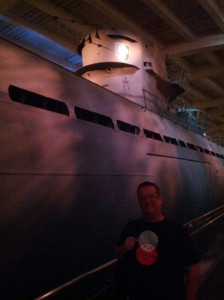 bend downward, toward colder and deeper water—carrying the submarine’s target noise away from your sensors.
bend downward, toward colder and deeper water—carrying the submarine’s target noise away from your sensors.
All of this means that the sub will usually detect you first. And he’ll probably kill you while you’re still carrying out the search phase of the ASW engagement.
In my opinion, the only thing crazier than trying to kill a hostile submarine is trying to catch one. But that’s exactly what happened on June 4, 1944. Operating in the Atlantic Ocean off the coast of Casa Blanca, U.S. Navy Task Group 22.3 under the command of Captain Daniel V. Gallery, detected the Nazi U-boat designated as U-505, and commenced a prolonged attack with ships and aircraft. Ultimately, the enemy sub was damaged so badly that it surfaced, and the crew abandoned ship.
The story of the hunt, attack, and capture is thrilling. I’m not going to spoil it for you by trying to pare the account down to a few paragraphs for my blog. Instead, I’ll say this…
Go see it for yourself.
 The U-505 is on display at the Chicago Museum of Science and Industry, along with log books, uniforms, photos, film footage, and other artifacts from the battle.
The U-505 is on display at the Chicago Museum of Science and Industry, along with log books, uniforms, photos, film footage, and other artifacts from the battle.
After years of wanting to see the U-505, I finally made it out to Chicago a couple of weeks ago. I walked through the exhibits, and I followed the excellent guided tour through the interior of the captured U-boat. I laid my hand on the rounded hull of that captive metal shark, and realized that this wasn’t a replica. It wasn’t a movie prop, or a clever simulation. This was the real thing. The actual Nazi submarine that ravaged Allied shipping in the Atlantic, and then fell into U.S. hands during one of the most daring naval operations in history.
The experience was powerful, and fascinating, and everything that I had hoped it would be. Despite a lifetime spent chasing submarines, and studying the science and history of ASW, I soaked up so many new facts that my brain is still spinning.
I need to go back there again. The hours that I spent there were not enough. There is more to see, more to hear, more to touch.
Which leaves me wondering if there might not be a more fitting motto for Fleet Anti-Submarine Warfare Training Center. I have one in mind. Sagire – Classis – Perceptum.
Search – Classify – Learn.
August 3, 2014
Back From the Future
I just got back from the year 2065. After many adrenaline-fueled months in the company of my old friend, David Stalin, I’ve reluctantly dragged myself back to the here-and-now. The adventure is over, at least for me. Angel City Blues is finished, and I find myself languishing in that strange limbo that overtakes me between book projects.
I’m not talking about having too much free time on my hands. There’s still plenty of work to do before ACB will be ready for readers. Polishing, editing, collaborating with my artist/designer to finalize the cover art, and a hundred details, both major and minor. But 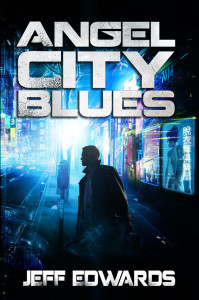 as far as this particular book is concerned, the magic of discovery is now behind me. Any surprises I encounter at this point will come in the form of incremental adjustments to the plot, or opportunities to sharpen the narrative and dialogue.
as far as this particular book is concerned, the magic of discovery is now behind me. Any surprises I encounter at this point will come in the form of incremental adjustments to the plot, or opportunities to sharpen the narrative and dialogue.
Like many authors, I tend to plan my books in advance. Not a scrupulously detailed outline that captures every beat and nuance that will occur in the story. (I’ve tried that before, and it robs me of all sense of creativity.) More of a general arc of flow for characters and action, including major plot points and a strategy for resolving the main dramatic conflicts. This leaves me plenty of elbow room for exploration along the way, and I need that room, because my characters (and my plotlines) like to go rogue when I’m not looking.
A main character insists on turning left when my plan calls for him/her to turn right. An incidental fragment of description from Chapter 3 evolves to take on enormous significance by Chapter 27. Two minor subplots conspire together to derail the main narrative. Some throwaway character with three lines of dialogue suddenly takes it upon himself to hijack the entire book. And every once in a while, the project itself takes a crazy detour. Case in point: I’ve been playing around with a short story idea that should probably shake out to something like 2,500 words. I left it alone for a couple of weeks, and now it’s trying to turn itself into a full-length novel. I love the idea, and it would be hell of a lot of fun to write. Unfortunately, I already have three books in the queue. I don’t have time for another one, but I may not get a vote in the matter. If the project decides that it needs to be written, I’ll have no choice, because I can’t concentrate on one story while another one is screaming for my attention.
When I’m reading someone else’s work, I get my dose of adventure by turning the pages to find out what happens next. When I’m writing, the real adventure begins when the story swerves away from my plan, and starts to do things I never intended.
Sitting here at my writing desk in 2014, that seems like a silly thing to say. After all, I invent the characters; I write the dialogue; and my fingers work the mouse and punch the damned keys to create the words that become the story. How could I possibly lose control of people and worlds that exist only in my imagination? All I can tell you is that it does happen, and that’s where the magic starts. The mechanics of the writing process vanish, and I find myself stalking the streets of a dark future Los Angeles, or standing on the bridge of a cutting-edge warship at the center of a raging battle.
Does it work that way for all writers? Probably not. But it works that way for me, and it’s just about the biggest kick you can imagine. It’s what keeps me coming back to this writing thing, day after day, and night after night.
Now, if you’ll excuse me, the year 2065 is calling my name…
July 15, 2014
TAG (A Cold War Poem)
For the record, I’ve never claimed to be a poet. Except for an occasional bawdy Haiku, I rarely turn my creative energies toward the poetic arts (or whatever they’re supposed to be called). But every once in a while, something vaguely poem-like will crawl into my head and set up housekeeping until I banish the damned thing by writing it down.
The short piece below is called ‘Tag.’ I wrote it in when I was serving aboard a guided missile destroyer during the Cold War, after a long night of playing chase with a Soviet Echo II class cruise missile submarine. I have no idea how it stacks up as poetry. As I’ve said before, this is not my forte. Despite its lack of artistry, I think it does a fairly good job of capturing the tension of stalking a (potentially) hostile sub back in the bad old days, when any encounter with the adversary could end in combat.
May 31, 2014
How to Change the World (10 Lessons from the Navy’s Top SEAL)
On May 17, 2014, Admiral William H. McRaven, commander of U.S. Special Operations Command, gave the commencement address at the University of Texas. Drawing on his experiences as a Navy SEAL, he offered the graduating students 10 lessons for changing the world.
Here’s a bit of wisdom from the mind and heart of a real American hero…


